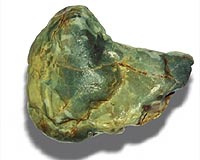| . |  |
. |
Tokyo (AFP) Aug 11, 2009 Powerful earthquakes just over 10 minutes apart rattled Japan and India on Tuesday, triggering panic on fears of a tsunami in the Andaman Islands and injuring more than 100 people southwest of Tokyo. The unrelated quakes struck in the early hours, shutting down Japanese bullet train services and a nuclear power plant and causing a landslide that closed a major highway near the Japanese capital. A 43-year-old woman was found dead after the tremor, buried under a pile of books, said a prefectural police official in Shizuoka, west of Tokyo. "We are investigating whether her death is related to today's earthquake," he said. At least 110 people were injured, mostly by falling objects such as television sets, including three who were hospitalised in serious condition, prefectural government officials and police said. The Japanese tremor registered a strong magnitude of 6.4, while the quake off the Andaman Islands in the Indian Ocean was a huge 7.6, according to the US Geological Survey. Panic-stricken islanders fled their homes, fearing a repeat of the enormous Asian tsunami that devastated the Andamans in 2004 and killed around 220,000 people in the region as a whole. "It was very frightening. Everything started shaking and people were running out of their homes," said Mrinal Sarkar, a villager in Diglipur in the northern Andamans. "People are afraid to go back inside." But a tsunami alert issued for India, Myanmar, Indonesia, Thailand and Bangladesh was later cancelled by the Pacific Tsunami Warning Center of the US National Weather Service. The emergency services control centre in Port Blair, the main town of the Andaman Islands, said there were no reports of casualties and property damage had been limited to cracks in some buildings on northern islands. S.N. Jha, who heads the Andaman Islands' Disaster Management Committee, said emergency services had been put on alert across the territory within minutes of the earthquake being felt. "In the end there was some panic in Northern Andaman, but there have been no reports of any serious damage to property or loss of life," Jha said. The quake hit at 1:55 am (1955 GMT Monday) around 263 kilometres north of Port Blair, and was around 33 kilometres deep. Mild tremors were felt 1,190 kilometres away in the eastern Indian port city of Chennai. The Japanese quake struck at 5:07 am (2007 GMT Monday) in Suruga Bay on the Pacific coast 170 kilometres southwest of Tokyo at a depth of 26.8 kilometres. It shook buildings, threw objects from supermarket shelves, and jolted people from their sleep in Tokyo and areas southwest of the capital. Japan's Meteorological Agency, which measured the quake at a revised 6.5, said there was no risk of a tsunami after initial waves raised the ocean surface by about 40 centimetres (16 inches) at Omaezaki, Shizuoka. A large landslide triggered by the quake damaged a highway in the prefecture at Makinohara, causing long traffic jams. Early warnings that the nearby Typhoon Etau could compound the damage by bringing heavy rains to the quake-hit region did not materialise when the typhoon veered east, heading away from the Japanese coast. Torrential rains from the typhoon had earlier caused at least 13 deaths from flooding and landslides in western Japan. The quake caused power failures in 9,500 households, utility officials said, while Central Japan Railway Co. suspended Shinkansen bullet trains in the quake-hit region before resuming the services several hours later. A strong earthquake had also hit central Japan late on Sunday. Around 20 percent of the world's most powerful quakes strike the country, which is located at the intersection of four tectonic plates. The Andaman Sea area also witnesses frequent earthquakes caused by the meeting of the Indian plate with the Burmese microplate along an area known as the Andaman trench. burs/fz/jah Share This Article With Planet Earth
Related Links Tectonic Science and News
 Jade Sheds Light On Guatemala's Geologic History
Jade Sheds Light On Guatemala's Geologic HistoryWashington DC (SPX) Jul 29, 2009 A new analysis of jade found along the Motagua fault that bisects Guatemala is underscoring the fact that this region has a more complex geologic history than previously thought. Because jade and other associated metamorphic rocks are found on both sides of the fault, and because the jade to the north is younger by about 60 million years, a team of geologists posits in a new research paper ... read more |
|
| The content herein, unless otherwise known to be public domain, are Copyright 1995-2009 - SpaceDaily. AFP and UPI Wire Stories are copyright Agence France-Presse and United Press International. ESA Portal Reports are copyright European Space Agency. All NASA sourced material is public domain. Additional copyrights may apply in whole or part to other bona fide parties. Advertising does not imply endorsement,agreement or approval of any opinions, statements or information provided by SpaceDaily on any Web page published or hosted by SpaceDaily. Privacy Statement |